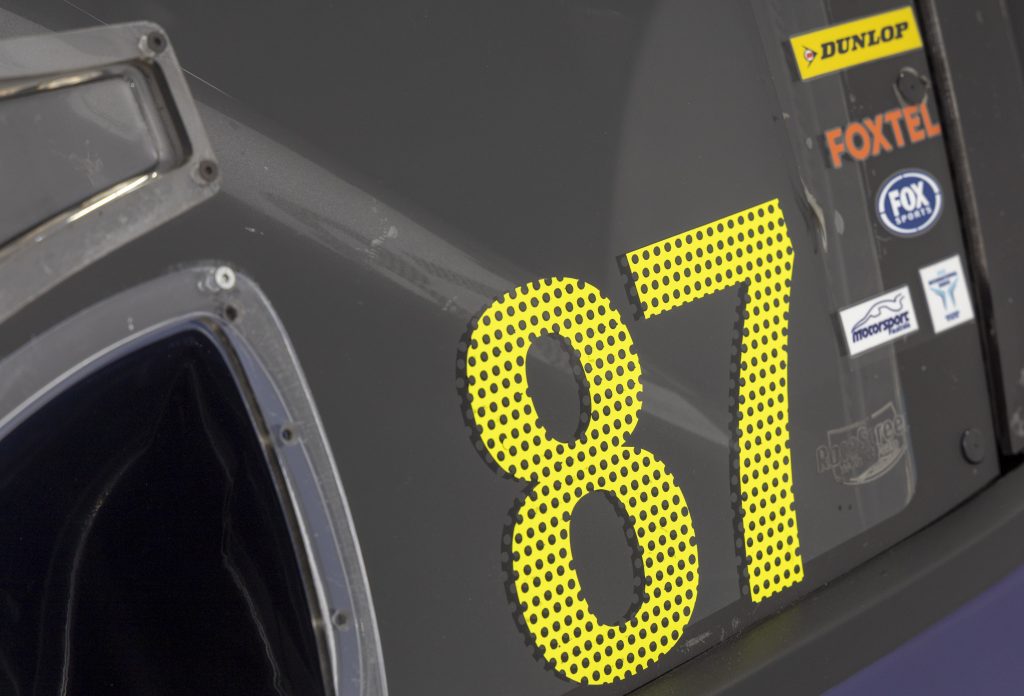

In fact, it will be just the eighth number which Triple Eight Race Engineering has used in the top tier of Supercars, on top of those which it inherited when it came into being through the mid-year acquisition of Briggs Motor Sport in 2003.
Back then, Briggs fielded Cars #65 and #66, while Car #888 was the Brad Jones Racing entry driven by John Bowe.
Triple Eight therefore began life racing against Car #888 but a less ironic arrangement would come to pass for 2004, and so its tradition of carefully chosen numbers began.
The Brisbane-based squad – this was before it moved from the former Briggs base in Bowen Hills up to Banyo – had unveiled a striking new look for its Betta Electrical Falcons and fitting new numbers for its first full season.
However, while Paul Radisich drove at Albert Park in Car #88, Max Wilson had to start with #77 because the timing system at the Australian Grand Prix could not accommodate triple-digit numbers.
Normal service began with first championship points-paying event of 2004, the Adelaide 500, after which the #88/#888 pairing became a constant despite changes to the driver line-up for each of the following two seasons.
In 2005, it was Steven Ellery in #88 and prized signing Craig Lowndes being handed #888, before Jamie Whincup replaced the former in 2006.
What became TeamVodafone in 2007 retained the same digits until Whincup earned the right to #1 with his 2008 championship triumph and repeat in 2009.
Triple Eight numerology was on show in the 2009 enduros, though, given it took the freedom which existed at the time to pair Whincup and Lowndes.
As the lead car, they ran as #888 and the second car, for James Thompson and the late Allan Simonson, reverted to #88.
Whincup himself was back in #88 for 2011, given 2010 was the exception in his run of six championship titles from 2008 to 2014, but #1/#888 otherwise applied during that period.
Triple Eight did run a third car during that span, with an Xbox One-backed wildcard in the 2013 Bathurst 1000 which used #10.
It was three cars on a full-time basis to facilitate Shane van Gisbergen’s arrival, a model which lasted three seasons.
The Kiwi brought his ‘own’ #97, Lowndes continued in #888, and Whincup drove with either #1 or #88 depending on his status as the preceding season’s champion or otherwise.
Van Gisbergen, though, stuck with #97 in 2017 after his maiden crown, while Lowndes’ retirement from full-time driving at the end of 2018 saw #888 placed on ‘holiday’.
It came back for the enduros of 2019 and 2020, when Lowndes was Whincup’s co-driver, but that practice was abandoned for 2021 given that year’s Bathurst 1000 was the seven-time champion’s swansong.
Whincup was retiring from full-time driving to become the Team Principal, a position from which Roland Dane was retiring – and so van Gisbergen gave up his cherished #97 for #888 for the weekend, in honour of his outgoing boss.
That event was also the first for the Supercheap Auto wildcard, with Russell Ingall and Broc Feeney driving Car #39, as did the former when he steered a Supercheap Auto-backed Commodore at Paul Morris Motorsport from 2008 to 2011.
Since then, it has been Feeney full-time in #88, van Gisbergen in #97, and the wildcard carrying #888 – with one exception.
Again, it was van Gisbergen giving up #97 for a season finale, granting Holden one last time with Car #1 before the marque left the Australian Touring Car Championship with the conclusion of the 2022 Adelaide 500.
With SVG departing what is now Red Bull Ampol Racing, and Brown having no obvious association with any particular number (aside from those chosen by the team), that became one of the bigger off-season questions.
That has now been answered, and even that decision was hardly made on a whim.
“The team discussed the idea of having sequential race numbers for 2024 so both Red Bull Ampol Racing cars were always listed in number order,” explained Whincup.
“Obviously, #89 looks too similar to #88 on track and driving down pit lane, so we arrived at #87.”





















Discussion about this post